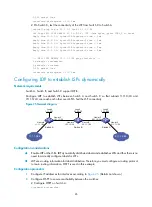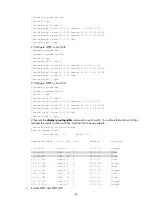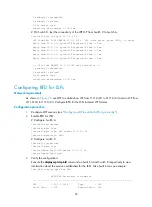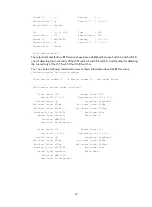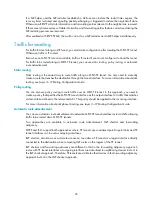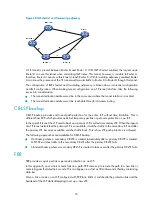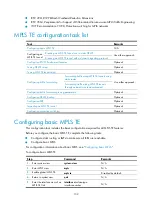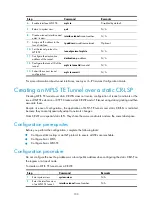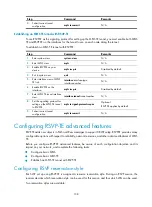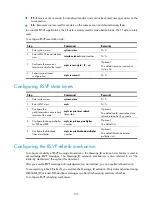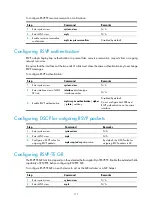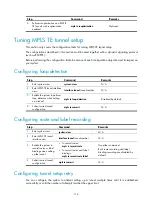
99
Figure 28
IGP shortcut and forwarding adjacency
A TE tunnel is present between Router D and Router C. With IGP shortcut enabled, the ingress node
Router D can use this tunnel when calculating IGP routes. This tunnel, however, is invisible to Router A;
therefore, Router A cannot use this tunnel to reach Router C. With forwarding adjacency enabled, Router
A can know the presence of the TE tunnel and forward traffic to Router C to Router D though this tunnel.
The configuration of IGP shortcut and forwarding adjacency is broken down into tunnel configuration
and IGP configuration. When making tunnel configuration on a TE tunnel interface, take the following
issues into consideration:
•
The tunnel destination address must be in the same area where the tunnel interface is located.
•
The tunnel destination address must be reachable through intra-area routing.
CR-LSP backup
CR-LSP backup provides end-to-end path protection for the entire LSP without time limitation. This is
different from FRR which provides quick but temporary per-link or per-node protection on an LSP.
In the same TE tunnel, the LSP used to back up a primary LSP is called a secondary LSP. When the ingress
of a TE tunnel detects that the primary LSP is unavailable, it switches traffic to the secondary LSP and after
the primary LSP becomes available, switches traffic back. This is how LSP path protection is achieved.
The following approaches are available for CR-LSP backup:
•
Hot backup where a secondary CR-LSP is created immediately after a primary CR-LSP is created.
MPLS TE switches traffic to the secondary CR-LSP after the primary CR-LSP fails.
•
Standard backup where a secondary CR-LSP is created to take over after the primary CR-LSP fails.
FRR
FRR provides a quick per-link or per-node protection on an LSP.
In this approach, once a link or node fails on a path, FRR comes up to reroute the path to a new link or
node to bypass the failed link or node. This can happen in as fast as 50 milliseconds, thereby minimizing
data loss.
Once a link or node on an LSP configured with FRR fails, traffic is switched to the protection link and the
headend of the LSP starts attempting to set up a new LSP.

